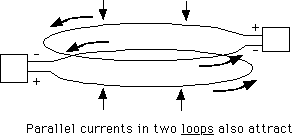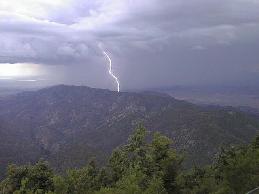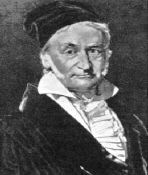|
William Gilbert (1544-1603) was the eldest of Jerome Gilbert's eleven children: four from his first marriage and seven from a second. Confusingly these included a second William who, even more confusingly, erected a memorial tablet to "our" William, but with his year of birth erroneously given as 1540. The family lived in Colchester, some 50 miles NE of London, where Jerome held the prestigious post of Recorder. William received a gentleman's education at St John's College, Cambridge, where he remained for 11 years until 1569, acquiring bachelor's and master's degrees, qualification as a medical doctor and a Senior Fellowship. This was followed by a four-year "Grand Tour" of Europe, mostly spent in Italy, before he settled in London in 1573 to practice medicine. His medical career was spectacularly successful, culminating with presidency of the Royal College of Physicians in 1599 and appointment as physician to Queen Elizabeth I in 1601. The Queen died two years later, though no blame for this attaches to Gilbert, who continued to be Royal Physician (to James VI and I) until his own death by plague 8 months later. It is of interest to note that Mark Ridley, a slightly younger geomagnetician (and acquaintance of Gilbert's, whom he commended as the greatest discoverer in magnetical science), was also a royal physician - in his case to the Tsar of Muscovy, Boris Godunov.
Gilbert's achievements as a doctor would have been enough to secure his fame, but he is remembered today for his investigations into magnetism and electricity, which he reported in De Magnete. These investigations were conducted from about 1581 to 1600, in parallel with his medical career. The experiments were made and discussed with like-minded friends who met in his house for this purpose; a pattern similar to that followed half a century later which led to the foundation of the Royal Society. Although magnetism was essentially a hobby, it was one that Gilbert, who never married, took very seriously and on which he expended large sums of money (£5000 according to William Harvey) for instruments and equipment.
The book itself is a handsome production, well illustrated with woodcuts and various printing devices such as illuminated letters at the start of each chapter. Marginal asterisks, of two sizes, draw attention to points of particular importance. After an author's preface, by Gilbert, and an encomiastic preface, by Edward Wright, there are 115 chapters, sometimes of only one paragraph, arranged in 6 books. Edward Wright (1558?-1615) is famous for putting Mercator's projection on a sound mathematical footing. The book is not unlike a modern PhD thesis in layout, starting with a survey of previous work, moving on to experimental results, discussing these and setting them in the broader context of worldwide results, and ending with speculation and unsolved problems.
The first book starts with an historical survey, then reviews the basic magnetic properties of a lodestone (poles, attraction and repulsion, magnetisation of iron) and ends with the famous chapter on the Earth itself being a great magnet. There is an interesting discussion of the medicinal properties of iron and lodestone, in which it is concluded that magnetism plays no part, since: "when drunk in a draught" [lodestone does not] "avail to attract or repel".
In the second book a clear distinction is drawn between the attractive properties of magnets and rubbed amber: "for it pleases us to call that an electric force". Many magnetic and static-electric experiments are reported, including investigations of the effects of interposed material, shape of lodestone and the effect of "arming" the poles with iron caps. Much folklore is refuted, not least the possibility of a perpetual motion machine: "O that the gods would at length bring to a miserable end such fictitious, crazy, deformed labours, with which the minds of the studious are blinded! "
Book three is concerned with the directive properties of a magnet, but also with details of the magnetisation of needles and the distribution of magnetism in a terrella (Gilbert's word for a spherical lodestone). The terrella experiments are of particular importance, since it was these that led Gilbert to draw the analogy between the magnetic field of the Earth and that of a terrella.
This introduction to geomagnetism is developed in more detail in book 4 (on declination, which was then known as "variation") and book 5 (on dip, which Gilbert calls declination).
The final book is more speculative. It concerns stellar and terrestrial motions, which Gilbert erroneously associates with magnetism and believes that this adds support to the Copernican theory. This was unacceptable to religious views at the time and many of the European copies of De Magnete have had Book 6 removed or defaced. Nevertheless, the idea of action at a distance for controlling the planetary motions was seminal for Hooke's and Newton's thoughts about gravity.
But a mere list of its contents can give only a hint of the book. It is constantly necessary to remind oneself while reading it of just how early it is. Here is Baconian science, based on experiment and observation rather than hearsay, being practised twenty years before the publication of Bacon's Novum Organum. And, over a hundred years before it ceased to be an offence punishable by flogging for a British naval helmsman to have garlic on his breath for fear of demagnetising the ship's compass, De Magnete dismisses as "fable and falsehood" the idea that a lodestone smeared with garlic loses its power. All this at a time when it was heresy to set experiment against the teachings of the church; indeed, it was also in 1600 that the philosopher Giordano Bruno was burnt at the stake for heresy. Admittedly, things were more relaxed in England than in Italy, but it was still courageous, perhaps even foolhardy, to publish such a book.
The quoted price of De Magnete may be a little misleading as, even without the benefit of this review, all four Latin editions, of 1600, 1628, 1633 and 1892 (a facsimile of the first edition) are sold out. While second-hand copies occasionally appear at auction, they are not cheap: a good first edition was recently (January 1998) sold for $15,000. The 1900 Chiswick Press edition in English (translated by Thompson) was limited to 250 copies and is now virtually unobtainable, but was reprinted in facsimile in 1958 by Basic Books, edited and with an introduction by Derek J. de Sola Price. A reprint of Mottelay's translation was published by Dover in 1958 and is still in print.
Once the reader has got used to its inevitably archaic style, De Magnete is a surprisingly readable book. There is no need to commend it to historians of science as they will already have read it. But any geophysicist would not only benefit from, but also enjoy reading it.
|

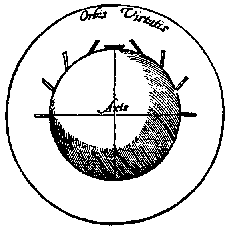

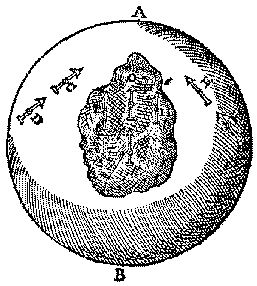
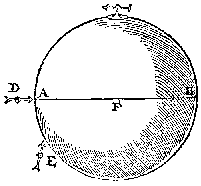
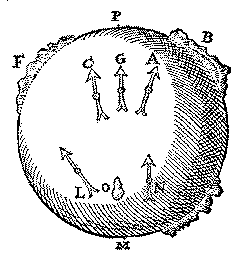
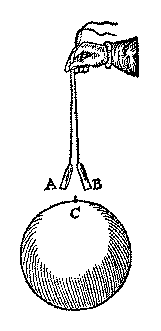
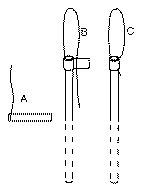

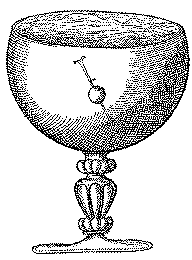
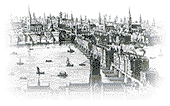

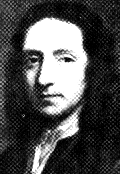
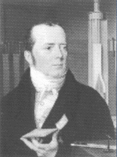
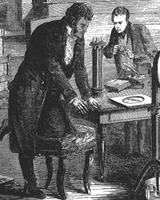
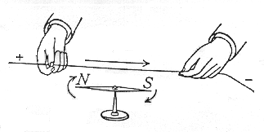
 Andre-Marie Ampere in France felt that if a current in a wire exerted a magnetic force on a compass needle, two such wires also should interact magnetically. In a series of ingenious experiments he showed that this interaction was simple and fundamental--parallel (straight) currents attract, anti-parallel currents repel, and the force is inversely proportional to the square of the distance between the wires.
Andre-Marie Ampere in France felt that if a current in a wire exerted a magnetic force on a compass needle, two such wires also should interact magnetically. In a series of ingenious experiments he showed that this interaction was simple and fundamental--parallel (straight) currents attract, anti-parallel currents repel, and the force is inversely proportional to the square of the distance between the wires.